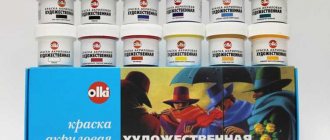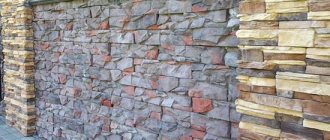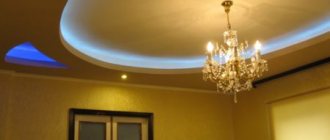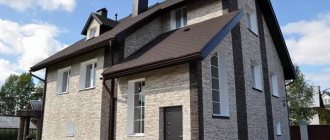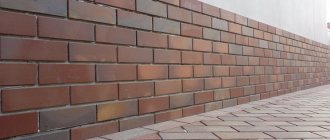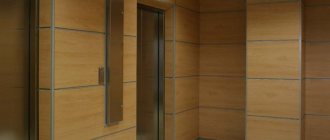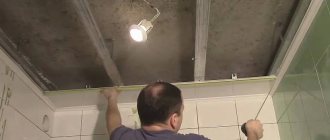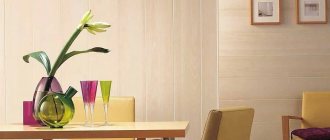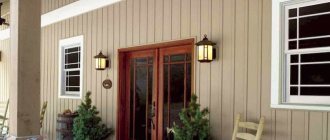Types of cork insulation
The technological process used in the manufacture of cork insulation is called agglomeration.
From this term comes the name of two main types of material, differing in the quality of raw materials and the nuances of processing:
- white cork agglomerate, for the production of which younger bark taken from the branches of a cork oak is used. White agglomerate, made in the form of tiles or rolls, is often used for decorative finishing of walls, while at the same time insulating them;
- black cork agglomerate is made from the bark found on a tree trunk. The technological process includes additional heat treatment of raw materials. Typically, black agglomerate is produced in the form of panels of different sizes that have excellent thermal insulation properties;
- cork granules, which are loose insulation. This type of insulation is used to fill the internal space of walls and, in some cases, to insulate floors.
Manufacturers offer cork insulation made in different sizes, each of which can be used in various areas of interior decoration. Insulation made in the form of rolls is often used as a substrate when laying laminate or parquet.
Rolled insulation becomes an excellent heat insulator when installing a screed made for installing a “warm floor”.
At the same time, it will significantly improve its sound insulation. Roll insulation sheets with a thickness of 2-10 mm are produced in standard sizes - 1000 x 100 cm.
To insulate walls, it is most convenient to use cork, made in the form of sheets of different thicknesses and sizes. The most durable cork insulation is made in the form of thick panels.
The application of this form of insulation is most diverse - roofing, foundation, external walls. To speed up installation, many manufacturers produce panels equipped with a locking system.
Release form
The agglomerate can be presented in the form of rolled webs and sheet products. The length of roll products is 10,000 mm with a width of 1000 and 1400 mm. The thickness of the canvas varies from 2 mm to 10 mm.
Sheet cork covering in the form of slabs and mats is widely used in the construction of wall structures as an effective heat and sound insulation resource. Dense versions of the material - panels for insulating attic and basement floors - are equipped with a locking system to facilitate installation work.
Linear dimensions of sheet cork:
- 915x610 mm;
- 935x640 mm;
- 1000x500 mm.
The thickness of the slabs varies in the range of 2-320 mm and up to 500 mm for black agglomerate.
Features of installation of cork agglomerate
All work on insulating wall surfaces should be carried out on a flat, thoroughly cleaned surface. If there are irregularities on the bases of the walls in the form of protrusions, depressions and cracks, then the wall should be plastered.
Insulation work can only begin after the plastered surface has completely dried.
Installation of insulation is carried out with an adhesive composition, in strict accordance with the instructions attached to it. Since sheet insulation is usually used to decorate walls, it is necessary to work with it extremely carefully.
The adhesive composition sets quickly, so it is almost impossible to move the insulation sheet. Sheets of cork insulation are glued end-to-end with a special adhesive composition made on an acrylic base.
The air temperature when installing cork insulation should be at least 15 degrees Celsius, and its humidity should not exceed 70%. The material can be easily cut with a regular knife, so for its installation you only need a cutting tool and a glue brush.
When insulating the floor, cork roll insulation does not need gluing; to avoid displacement of the rolls when installing, the material is connected with tape.
There is a ready-made floor covering consisting of several layers, including cork insulation. This is a special type of laminate, which, in addition to the traditional slab of plywood connected by a locking fastening, decorative and protective coating, includes two layers of cork backing.
It is important to know that if the home owner needs to obtain high-quality sound insulation, then the ceiling surface should be finished with cork agglomerate, taking care of high-quality joining of the material
About the material
Technical cork is made from the bark of the cork oak tree, which grows mainly in the European Mediterranean. There is especially a lot of it in Portugal. That is why it is the world leader in the production of cork materials.
For the first time, the bark is removed from a tree that has reached 25 years of age. Thanks to active regeneration, the oak tree restores its bark and does not die. After 9 years, the bark is removed again. At the same time, its quality improves every time. During the life of a tree, the bark can be removed about 30 times.
After removal, the bark dries naturally. Then it is crushed. The resulting granules are pressed and treated with steam, resulting in the release of a binder - suberin. This natural glue tightly binds the granules together.
Increasing demands on the damper layer, such as a cork substrate, have forced manufacturers to look for various combinations of technical cork with other materials. As a result, in the construction market you can find:
1. Classic cork base, which excludes any synthetic additives.
Natural cork.2. Bitumen-cork type. Its peculiarity lies in two layers of different components applied to kraft paper - bitumen on top, cork crumbs on the bottom. Combining bitumen and cork into one unit turns the substrate into an excellent waterproofing material.
3. Rubber-cork material, which is an elastic mixture of cork crumbs and synthetic rubber. Having good waterproofing properties, it is indispensable in rooms with high humidity. Unlike the two previous types of substrate, it absorbs structural noise well.
Rubber-cork backing.
Specifications
Cork material for substrates has the following technical characteristics:
- specific gravity (density) - 180-260 kg/m3;
- tensile strength (tear resistance) - more than 2 kg/cm2;
- deformation under pressure of 7 kg/cm 2 no more than 10%;
- fire resistance - class B2;
- sound absorption - at a frequency of 2.1 kHz, the absorption coefficient is 0.85. For other types of substrates it does not exceed 0.7. To be fair, we note that low-frequency and structural noise (resulting from working with a power tool in the house) noise are reduced to a lesser extent;
- thermal conductivity coefficient - 0.037-0.043 W/(m*K).
Price range on the market and main manufacturers
Cork substrate is produced in many European countries. Their products are widely represented on the Russian construction market. There are production facilities (joint ventures) for its production in Russia.
The most commonly found cork on sale is from Portugal - there are several companies producing it here, represented by the following brands: Vintage, Amorim Group, Egen, Wicanders and Sedacor.
The Vintage company produces roll substrate with the following thickness:
The Amorim Group brand produces roll underlays Premium Cork, Cork4u and Floorwood Portugal Cork:
All types of substrates are produced in the form of rolls 10 m long and 1 m wide.
In addition, the market includes companies Parkolag and Tarkett Germany, Decora Poland, Ibercork Spain and many others. Prices range from 49 rubles/m2 to 576 rubles/m2. Their size is determined primarily by the thickness of the material.
The second most important indicator is the density of the substrate (the denser, the higher the price). In addition, the type of technological process, the price of raw materials, and transportation costs have a significant impact on its cost. Therefore, it is possible to observe significant fluctuations in the price of the same type of technical plug.
Types and characteristics of cork panels
Cork is a universal natural material that is actively used in various industries. It is used to make insulation and interesting decorative wall coverings.
Recently, this finishing material has become actively used by designers and homeowners for interior decoration.
Cork panels look beautiful not only on walls, but also on floors. In addition, products made from cork are quite practical, so this material should not be evaluated only as a decorative element.
Cork coverings have many advantages:
- They are able to absorb sounds, providing noise protection to the room.
- Cork is an environmentally friendly material.
- Cork panels, being antistatic, do not accumulate dust.
- Having low allergenicity, cork is not contraindicated for asthmatics and allergy sufferers. It can be used to decorate walls even in children's rooms.
- Cork coatings are practically not subject to aging and retain their original appearance for a long time.
- Possessing chemical inertness and fire safety, the material does not emit harmful substances when heated and does not support combustion.
- Cork panels are easy to clean from dirt, are resistant to rotting, mold formation and do not absorb foreign odors.
- The material has good thermal insulation characteristics, it is strong and durable.
Types of cork panels
Due to the fact that oak bark takes a long time to recover, they try to use it economically. Therefore, the thickness of cork coverings does not exceed eight millimeters.
Cork wallpaper is the cheapest and easiest to install type of covering. You can decorate walls with this material yourself, without the help of professionals.
- Such panels can be glued with regular wallpaper glue, since they consist of a thin layer of cork applied to a paper base.
- Nowadays, self-adhesive wallpaper has appeared, the installation of which does not require the use of glue. It will be enough to tear off the protective film on the inside of the product and you can lay the wallpaper on the wall.
- The structure of the wallpaper can be fine-grained or plastic.
- This cork covering is produced in rolls measuring 5500x760 or 8000x500 mm.
- The main disadvantage of cork wallpaper is its weak sound and thermal insulation properties. This is due to the fact that thin veneer is used for their manufacture, which is not capable of fully maintaining these characteristics.
Rolled cork is often confused with wallpaper. Their difference is that the wallpaper has a paper base, and the rolls consist only of cork.
- the thickness of such products is usually from two millimeters;
- roll covering provides good heat and sound insulation;
- special glue is required for their installation;
- installation of roll coverings is quite complicated;
- products are not afraid of moisture and physical influences;
- Rolled cork covering is durable.
Cork boards for walls are the most durable and wear-resistant material of all types of cork panels.
- Boards are produced from waste that remains after the production of cork wallpaper and rolls. First, the bark is finely cut or crushed, then glued and pressed. The result is slabs with a smooth or rough surface.
- Cork tiles are available in sizes 300x300 and 600x300 mm. They are easy to stick and require virtually no surface preparation.
- Cork panels can also be produced in the form of rectangular slabs with a width of 100 mm and a length of up to 6 meters.
- The material has a high level of sound insulation.
- Cork panels are not afraid of moisture.
- When decorating walls with slabs, it is best to use less safe PVA glue. To protect the panel from dust, after installation it can be treated with varnish or wax.
The natural color of cork is very expressive, but it is not suitable for every interior. Today they have already begun to produce panels of different colors, preserving the texture of the material. Usually this is a calm pastel palette.
There are also models with different applications, interspersed with metal or glass chips and with inlay.
Technical cork in rolls
Technical roll cork has proven itself as a unique sound and heat insulating material. It has become a popular solution for modern urban and suburban construction as an effective insulation for ceilings, walls or floors. A popular choice as a soundproofing material with minimal floor elevation and increased wall thickness. Technical cork has proven itself to be highly resistant to rot, moisture and mold. A completely hypoallergenic, antistatic product - a natural material created by nature itself.
The best manufacturers of cork insulation
The main suppliers of cork agglomerate to our country are Portuguese manufacturers. Among the leading companies in the insulation materials market are the following brands:
- Amorim, the oldest manufacturer leading the global market. The average cost of materials is presented in the range - for panels from 600 rubles / sq. meter, the cost of packaging roll material starts from 1200 rubles.
- Wicanders, the company's product range includes cork insulation for wallpaper and decorative cork coverings. The cost of insulation starts from 1,300 rubles per roll.
- Izora specializes in the production of panels designed to insulate walls, roofs and floors. The average price, depending on the type of agglomerate, is 600-450 rubles/sq.m. meter.
- Sedacor. The main products are cork insulation in rolls and sheets. Packaging sheet insulation (6 square meters) will cost the buyer approximately 900 rubles, and the cost of roll insulation starts from 135 rubles. per sq. meter.
Many potential buyers of cork insulation are confused by the high cost of this material. In fact, this is its main disadvantage. The cost of building a house that is insulated with cork agglomerate can increase by 8-10% compared to using synthetic insulation.
It is not recommended for use in rooms where high humidity is constantly present, since even after treating the insulation with compounds that improve its moisture resistance, it remains sensitive to moisture. Moreover, it has the ability to accumulate it.
To install the cork covering, you need to purchase a special glue. Its cost is high, which significantly increases the cost of insulating a house.
However, if you take into account the quality of balsa wood insulation, its unlimited service life and the absence of harm to the health of its owners, the cost turns out to be not so high. Therefore, many consumers who care not only about maintaining heat, but also about the health of their family, are increasingly using cork insulation in the construction of their homes.
All about cork agglomerate - the best insulation for the home, watch the video:
Technical plug for insulation
Insulation materials, which were recently considered the best in the field of thermal insulation, are gradually giving way to cork agglomerate. The thermal insulation effect of technical cork 3 mm thick is comparable to the use of 3.5 cm of mineral wool, 40 cm of facing brick, 150 cm of reinforced concrete.
The rather high cost is justified, because the coating will serve you for a long time without losing its properties. Its service life is not limited to a certain period of time.
Panels made from technical cork, regardless of thickness, are easy to transport, lay, and cut into pieces of the desired size.
Use cork for thermal insulation:
- From the outside of buildings (under bitumen on the roof or under plaster on the walls);
- Inside various rooms (as cork insulation for walls, floors; as the basis of partitions).
And here is an article about the types of thermal insulation of a house.
Here https://ru-house.net/stroitelstvo/ you will find many more informative articles about building a house.
Flaws
Cork has no significant disadvantages. Users only note a few weaknesses:
- The material is quite expensive. Considering the excellent performance and the absence of synthetic additives, the price of the material is quite justified. It is also worth noting its long service life, which eliminates the need for periodic replacement.
- Insulation, which is characterized by low density - from 95 kg/m³ to 130 kg/m - transmits vibration waves well. Accordingly, it cannot be used as a barrier that prevents noise and vibration from penetrating into the object. To protect against them, experts recommend considering cork insulation, the density of which starts at least 130 kg/m³.
- The insulating substrate of the walls may deteriorate if this type of finishing is used at industrial facilities and when metal cutting or other types of processing are performed in the premises. This is due to the fact that metal shavings can worsen the thermal insulation qualities of the material. Its pores will become clogged with solid particles. In this case, long-term operation will provoke a violation of the structure of the plug.
The material will protect against noise if the user fulfills the basic condition, that is, it provides a high frequency range of 1.5 kHz.
Types of material and its advantages
Cork wallpaper
Cork wallpaper is not a cheap pleasure. However, the cost is justified by environmental friendliness, high performance, long service life and excellent decorative effect. You can find cheaper products, it all depends on the reputation of the company that produces the material, the type of coating and the base used.
If we talk about the types of cork material, there are several of them. This:
- baseless wallpaper;
- wallpaper with base.
Baseless
Wallpaper without a base is much more expensive, but is absolutely environmentally friendly. In the manufacture of such wallpaper, glue is not used as a binding material. But how do particles connect with each other? When the cork is heated, the resinous substances that are in it melt, connecting the crumb particles together. Products of this type are quite dense, but at the same time have low fracture strength. Therefore, you need to work with such wallpaper very carefully.
Production of wallpaper from cork
Wallpaper with a paper base is much more affordable. This is a cheaper and more common option. Their production involves gluing cork veneer onto a paper base. It is much easier to glue such wallpaper on the wall, because it is not so easy to spoil it. You can do this kind of work yourself.
Such wallpapers mainly serve only a decorative function. Due to the small thickness of the product, they do not have thermal insulation and sound insulation properties. Their advantages are that they are cheaper, light weight, some are already covered with wax or varnish, in addition, they can be glued not only to walls, but also to the ceiling.
You can buy the material in a specialized store. Wallpapers are:
- Rolled.
- Tiled.
Cork tiles
The material in rolls is sold in reels that have a width of 30, 60 or 100 cm, a length of 10 m. The thickness of such wallpaper is 3 mm. If we talk about tile products, they usually have a standard size - 30x30 cm or 60x60 cm. Knowing these parameters, you can easily calculate how much material you need to cover the walls.
Please note that tile materials can be single-layer or double-layer. The latter type is characterized by the fact that its lower layer is most often painted, and the upper layer consists of compressed cork granules. Thanks to this, the top layer appears illuminated and has a certain tint, which gives the material originality
Thanks to this, the top layer appears illuminated and has a certain tint, which gives the material originality.
It should be noted that everyone can choose the material to their taste, since the products have different textures, patterns and colors. Decorative cork can give your home a unique look.
But why is decorating walls with cork considered an expensive pleasure? Thanks to its performance qualities. What are they?
- Ecological cleanliness.
- Convenient sizes.
- Presence of a protective coating (varnish or wax).
- Long service life, 20 years or more.
- Resistance to mechanical damage.
- Easy to care for, you can use any detergent.
- They do not cause allergies and do not absorb unpleasant odors.
- Wallpaper without a base has good soundproofing and thermal insulation properties.
- With their help, you can hide wall defects: curvature and unevenness.
- Can be used for finishing ceilings and floors.
They look attractive in the interior.
As you can see, using cork to decorate your home is very profitable. So, having learned everything about cork, you can proceed directly to the work of gluing the room.
Environmentally friendly thermal insulation for the home
Mineral wool and fiberglass
Safe insulation for walls and ceilings
Glass wool is widely represented on the Russian market by products under the Knauf, Izover and Ursa brands. These insulation materials are made from quartz sand and contain about 40% recycled glass. In fiberglass and basalt mineral wool (Isover, Isorok, Izobond and others), a small amount of formaldehyde or acrylic binders are used as a binder, as in URSA PureOne mineral wool.
During installation, inorganic thermal insulation - mineral wool and fiberglass - has significant disadvantages. When installing basalt slabs and mats indoors, the level of contamination with microscopic fibers significantly exceeds the norm. Particles of these insulation materials do not have a carcinogenic effect, but can cause irritation of the respiratory tract. Their disadvantages include the ability to absorb moisture and the possibility of subsidence.
Ecowool home insulation
Ecowool is also an environmentally friendly insulation material – a fairly new insulation material on the Russian market. The material consists of two-thirds cellulose and shredded waste paper, in addition to recycled paper, straw is also used. During production, substances that prevent combustion are added to cellulose - fire retardants. The advantages of ecowool include the ability to absorb and quickly release moisture.
The disadvantages are that cellulose insulation can rot and mold when constantly wet. Since ecowool consists of waste paper, it is a flammable insulation and cannot be called an insulation that mice do not eat. This environmentally friendly insulation for the floor in a wooden house or walls in a frame house is easy to install and safe for the environment and human health.
Cotton home insulation
Photo. Choosing environmentally friendly insulation
Organic cotton insulation is one of the most environmentally friendly materials available today, as it is made from recycled jeans. Cotton slabs and mats can be laid independently without the use of personal protective equipment. The insulation has excellent sound insulation, so this material is often used when equipping home theaters.
Cotton is a flammable material, so during production, fire retardants are added to the insulation - substances that prevent combustion and the spread of fire. When installing cotton insulation, its slabs are quite difficult to cut, and laying the material will take a little longer than when working with mineral wool. When installing fiber insulation, remember to use a vapor barrier to protect against moisture.
Linen home insulation
Flax mats have recently appeared in Russia under the Ecoteplin brand. From an environmental point of view, flax mats are an absolutely clean insulation material that does not emit toxic substances during operation. Linen, due to its natural origin, is safe for health and can be used in premises where safety requirements are especially high, for example, in hospitals and preschool institutions.
According to the manufacturer, the service life of linen thermal insulation is about 60 years, the material retains its original properties throughout its entire service life. The insulation is not exposed to fungus and mold, and does not settle over time. Linen thermal insulation is difficult to ignite and does not support combustion, and in terms of thermal resistance it significantly exceeds the glass wool discussed earlier.
Sprayed polyurethane foam (PPU)
Photo. Thermal insulation of PPU frame house
Sprayed polyurethane foam is a safe material, since clean water acts as a foaming agent. Due to the absence of cold bridges and seams in the thermal insulation layer, a 1.5-fold reduction in heat loss is achieved compared to traditional slab and roll materials. PPU (sprayed polyurethane foam) reduces the risk of condensation and mold appearing on the treated surface.
The disadvantages of this thermal insulation include its relative high cost; PU foam is applied to the surface using special equipment. Hydrofluorocarbons may have adverse effects on humans during application. Also, the disadvantages of insulation include the fact that polyurethane foam is destroyed under the influence of direct ultraviolet rays, thermal insulation quickly ignites and spreads fire.
Review of cork insulation
Cork insulation is one of the most effective environmentally friendly modern thermal insulators. The material consists of slabs or rolls of crushed cork oak bark, which is bound using organic additives.
Description and features of the production of cork insulation
High-quality cork is one hundred percent environmentally friendly natural material. It is made from the bark of a special cork oak tree, which grows in many Mediterranean countries.
Main types of cork insulation
The manufacturing technology of cork insulation is called agglomeration. Thus, all modifications of technical cork are divided into two main types:
White cork agglomerate. In this case, bark from oak branches is used to produce the material. This cork is great as a decorative covering. That is, by insulating the walls, you will not have to carry out additional finishing. Most often, tile and roll materials are made from white agglomerate.
In addition, cork insulation is divided into types according to the form of release. Technical cork can be in the form of rolls, mats, slabs and panels. The thickness and density of each variety is different, as is the scope of use.
Technical characteristics of cork insulation
Thermal insulator made from cork can have different shapes, so its technical characteristics also vary. Let's look at the averages:
- Thermal conductivity
. This coefficient is 0.04 W/(m*K). It is close to that of mineral wool. However, the thickness of the cork is much less.
Advantages of cork insulation
The growing popularity of cork insulators is explained by the presence of a large number of advantages of these materials. Let's look at them:
Combination of light weight and strength. Plates, panels, sheets and rolls of cork are very light and at the same time have decent strength and elasticity. The material is easy to transport and install manually. In addition, such a heat insulator will not exert absolutely any pressure on structures, walls and other insulated surfaces.
Disadvantages of cork insulation
In general, it is difficult to identify any significant disadvantages of this universal material. We can only note a certain limitation in the use of cork insulation. Thus, it cannot be installed in industrial premises where metalworking takes place. This is due to the fact that metal shavings penetrate quite quickly and clog the pores in the heat insulator. After this, it loses its performance qualities.
Criteria for choosing cork insulation
When planning to purchase cork material for insulating walls, floors, ceilings or roofs, decide on the required amount of heat insulation and choose a reliable manufacturer. The world leader in the production of cork insulation is Portugal.
Price and manufacturers of cork insulation
Cork oak grows mainly in countries with a maritime subtropical climate. In Europe, these are territories washed by the Mediterranean Sea.
- Amorim
. A company founded in the century before last and specializing in the manufacture of various products from cork oak. It is a world leader in the production of cork. Many brands use the company's production facilities to produce their products. The price of cork insulation from this company may vary depending on the thickness of the slabs and modifications. On average, the cost of panels is from 600 rubles per square meter. Rolled material costs from 1,200 rubles per package.
Brief instructions for installing cork insulation
Laying cork insulation on the floor or walls is not difficult. For fixation you will need special glue. It can be universal acrylic, which is suitable for walls, and contact for the floor. If you are using a universal composition, then it is enough to lubricate one surface with it. When using contact, be sure to lubricate both surfaces.
Clean the work surface. The wall or floor must be perfectly level. We cover the cracks, cracks, uneven areas, and clean off the bumps.
Remember, like other insulation materials, cork cannot be glued to damp surfaces. The material simply won't stick. In addition, fungus may appear in a humid environment.
Cork insulation is a modern environmentally friendly material that has a number of advantages. It is light, elastic, does not support combustion and provides reliable heat and sound insulation. It can be used to insulate walls, floors, roofs, frame structures and foundations.
General information
Cork has been used as insulation for quite a long time, since its high thermal insulation properties are due not to special processing of natural raw materials, but to the internal structure of the substance itself.
What are natural cork panels?
Section of cork oak bark under a microscope
- Cork is a natural material that is extracted exclusively from the bark of the cork oak tree. The distribution area of this plant species is quite narrow, which is why this heat insulator costs a lot.
- Inside, the substance is a series of sealed chambers of microscopic size. Inside the chambers there is a mixture of gases, the main component of which is inert nitrogen.
- Thanks to this structure, even a fairly thin balsa wood plate has high heat transfer resistance; in addition, it is characterized by significant elasticity. So even with prolonged compressive deformation, after the load is reduced, the shape of the panel is restored quite quickly.
Depending on the raw materials used, several types of panels are distinguished:
- Natural cork is practically not used for thermal insulation; it is exclusively a decorative material.
- Cork agglomerate is a panel based on crushed cork, joined into a single array using adhesives and polymer materials. The most common thermal insulator.
Photo of an agglomerate panel
Cork granules are a loose insulation material that is used to fill cavities in the walls of frame houses, as well as underground spaces.
Thermal insulation materials based on granules made from cork tree bark have the following advantages:
- Low thermal conductivity - if used correctly, they significantly reduce the level of heat loss in the building.
- High elasticity and resistance to deformation. For this reason, cork is used not only as a thermal insulator, but also as a substrate for some types of floor coverings.
- Good noise absorption performance. Insulating walls with cork from the inside will provide your apartment with a decent level of sound insulation. In addition, agglomerate panels can be used to insulate the inside of a roof made of “noisy” materials, such as corrugated sheets or metal tiles.
Resistance to deformation and noise absorption makes cork agglomerate an excellent material for substrates
Environmental friendliness is another undoubted argument in favor of choosing cork. Among all insulators, it contains the least amount of potentially toxic impurities.
Fairly simple DIY installation can also be considered an advantage. Plates and rolls of agglomerate are easy to cut and mounted on almost any surface.
There are only a few disadvantages of this heat-saving substance:
- Firstly, the price is quite high. In terms of cost/energy saving ratio, agglomerate is clearly inferior to modern polymer insulation and mineral wool.
- Secondly, insufficient moisture resistance. When moisture enters, the granules begin to swell and deform, which is why in most cases additional hydro- or vapor barrier is required.
Disadvantages of cork insulation
In general, it is difficult to identify any significant disadvantages of this universal material. We can only note a certain limitation in the use of cork insulation. Thus, it cannot be installed in industrial premises where metalworking takes place. This is due to the fact that metal shavings penetrate quite quickly and clog the pores in the heat insulator. After this, it loses its performance qualities
You can also pay attention to the fact that the material is not able to reduce vibration noise that enters the room through various ceilings
And, of course, one of the main disadvantages of all natural insulation materials is their relatively high cost. The price of cork insulation is an order of magnitude higher than that of artificial analogues.
Making the right choice
For residential premises, it is advisable to give preference to cork insulation with antibacterial and fire-resistant impregnation in order to provide protection both from the possible proliferation of putrefactive organisms and from unintentional fire.
It is also necessary to pay attention to the composition - the fewer various impurities, the better quality it is and, accordingly, the more natural and environmentally friendly, which is especially important for living space. In addition, the choice of a specific technical cork should be determined by its density, on which its stability and elasticity depend.
The optimal density value is considered to be in the range of 110–130 kg/cm3
In addition, the choice of a specific technical cork should be determined by its density, on which its stability and elasticity depend. The optimal density value is considered to be in the range of 110–130 kg/cm3.
If insulation is purchased for installation under wallpaper, then preference should be given to roll insulation in order to eliminate the further possibility of unevenness appearing on the decorative surface. And in the case of a floor surface, the choice can be made in favor of both rolls and mats.
